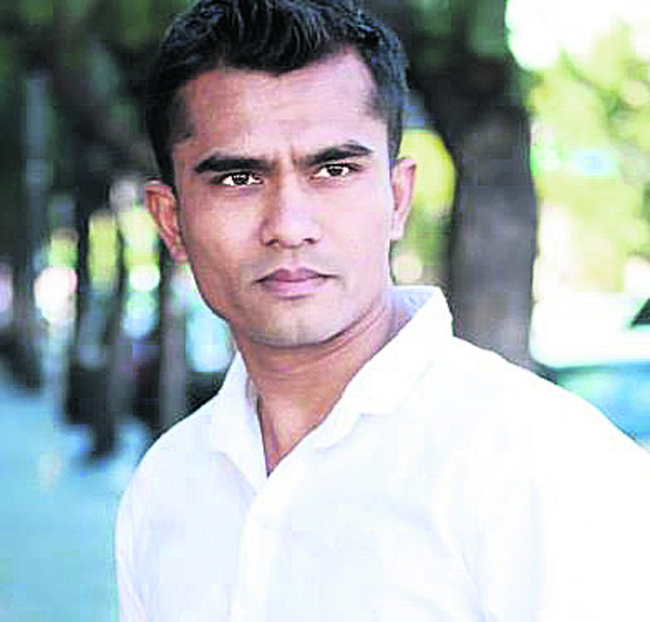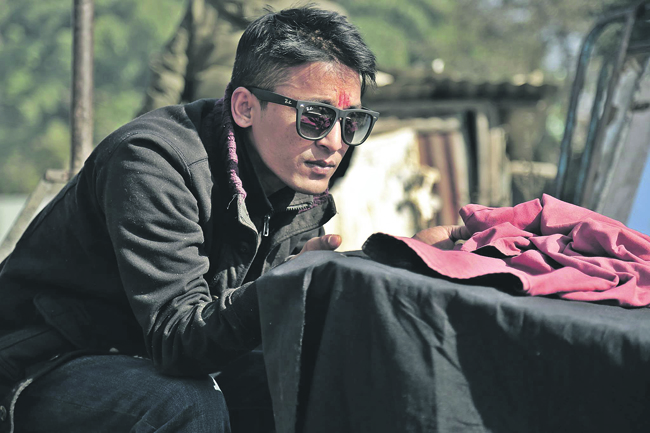The Nepali film industry has progressed a lot over the years. Both the directors and the audience have seen changes in the sector. Some back-to-back hit movies have not only helped increase the stardom as well as the fan following of certain actors but have also made significant contribution to Nepal’s economy.
But how far has the Nepali film industry come and what lies on the horizon? We talked to a few Nepali film directors and avid cinemagoers to find their takes on the matter.
How long have you been in the industry? What do you think is your contribution in changing the direction of Nepali Film industry? Do you feel that the quality of films produced have really changed over the years? What are the improvements that can be made?
Naresh Kumar KC
Director
 I entered the film industry in 2004 with documentaries and then assisted in movies like ‘Sick City’ and ‘Sano Sansar’ in 2007. Personally, I think there is still the need for an impactful contribution. Keeping such things in mind, I hope that people have related to the idea of minimalism and experimentalism in the movie ‘Dying Candle’ which was based on our own realist subjects.
I entered the film industry in 2004 with documentaries and then assisted in movies like ‘Sick City’ and ‘Sano Sansar’ in 2007. Personally, I think there is still the need for an impactful contribution. Keeping such things in mind, I hope that people have related to the idea of minimalism and experimentalism in the movie ‘Dying Candle’ which was based on our own realist subjects.
Jharana Thapa turns director

I believe that this movie has taken a step further in the cinematic new wave and in every possible aspect. Despite of our cinematic journey crossing half a century, we are yet to explore the innovative grounds but we have stepped into a phase of inviting changes with time. Creative effort should be encouraged by the Film Development Board (FDB) as well as the government. This can be done through investments, higher percentage in producer’s revenue as well as by ensuring release by private distributors and exhibitors so that the filmmakers can have a smooth filmmaking journey.
Navin Awal
Director

I have been working in the media industry for eight years now. ‘Bijuli Machine’ is my first feature film. I think understanding the vastness of the film making process itself is the first contribution a filmmaker can make in the industry. I believe I have contributed to the best of my ability by making authentic films despite the numerous risks and have, to a certain extent, regained the faith of Nepali audiences. There is a need to do enough research on your subject matter before you make a film. Recently, directors who have spent enough time on it have come up with better films.
Technology and education have also helped better the quality of films produced today. In my view, most of us our films don’t do well at the box office because of poor marketing as we spend more in productions and very little in promotions. In addition to this, it is important that a central body or an electronic system accountable for monitoring authentic box office collection is established. This would encourage investors and filmmakers to continue with their innovative efforts.
Are you an active follower of Nepali movies? Which is your favorite Nepali movie so far? Have you really witnessed change in our film industry? What are the improvements that can be made?
Kiran Khatri
Undergraduate Student

I wouldn’t say I watch a lot of Nepali movies but I like being updated. ‘Kalo Pothi’ is my favorite Nepali movie so far. There have been a lot of changes in Nepali movies in the recent times but there are still many things that need improvement. I find directors these days have shifted their interests from melodramatic stories to contemporary issues and are also paying more attention to the actors’ wardrobe and the cinematography. Movies these days are also more relatable. The subject matter is intense and there are no stereotypes about how an actor should look. It’s their acting skills that seem to be prioritized when casting them. But I also think it is time our film industry ventured into other genres – like fantasy, horror, etc. – rather than just sticking to tried and tested ones like action, romance, and comedy.
Pariksha Onta
Undergraduate Student

I’m a big fan of Nepali movies now. ‘Pashupati Prasad’, ‘Dashdhunga’,’Wada no.6’ and ‘Chakka Panja’ are some of my favorite movies so far. I actually didn’t watch Nepali movies at all but that changed when some films stared getting really good reviews. I think the picture quality, dialogues, casting, cinematography and styles of direction have changed over the years. The actors these days too seem to be focused on their performances and get their characters just right. The story, sound, and other technical aspects are also very good in today’s Nepali cinema but the film industry needs to work on making movies even better and taking it to international platforms.
Niraj Kafle
Entrepreneur

I don’t follow Nepali movies but I often watch those that people recommend. There has been much improvement in Nepali movies recently. One can see the improvements in the sound quality, cinematography, presentation and digital format in the Nepali film industry. I feel the movie ‘Kagbeni’ has made quite an impact in the film industry. I recently watched ‘Bijuli Machine’, ‘Purano Dunga’, ‘Chhaka Punja’, and ‘Jatra’ and these movies surpassed my expectations. ‘Pashupati Prasad’ and ‘Kalo Pothi’ were two of the best movies I have watched so far. I would prefer Nepali to English but I also think dialogue delivery makes all the difference in the movies, no matter what language is used.
Aastha Satyal
Undergraduate student

‘Dying candle’ is one of the best Nepali movies I have watched so far. It’s obvious that the Nepali film industry now pays a lot of attention to storytelling and cinematography. It all seems much more realistic now. It’s nice to watch character oriented films rather than just melodrama and action. That way, Nepali movies have come a long way. However, I think there is very limited investment in the Nepali film industry and that is sad. If both the government and the private sector could invest more in this department then may be young talents would get more opportunities to learn and make better quality cinema.

































